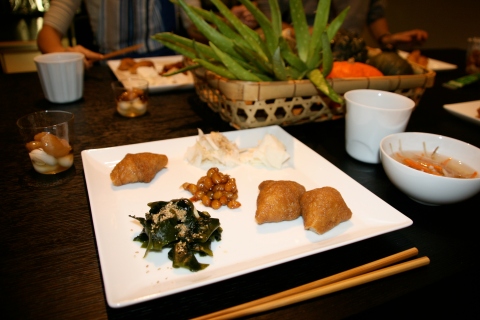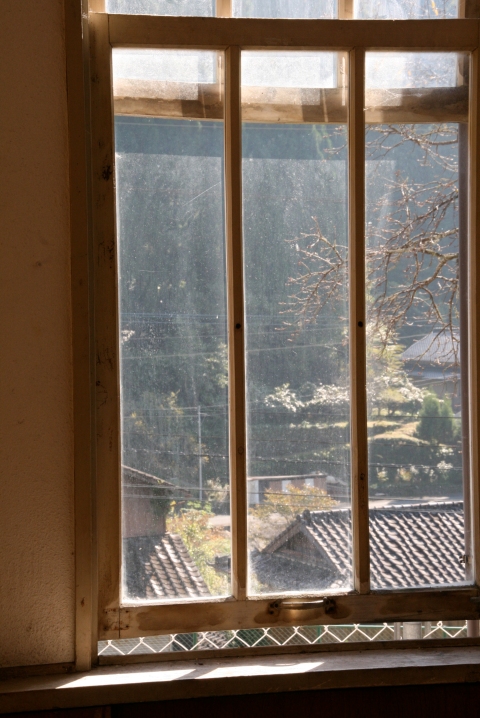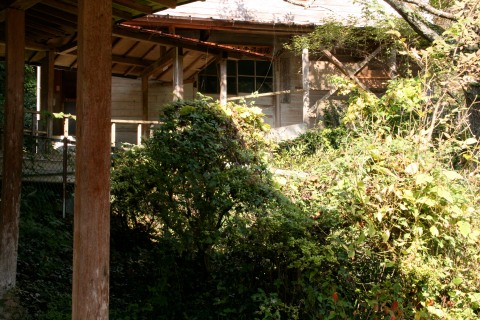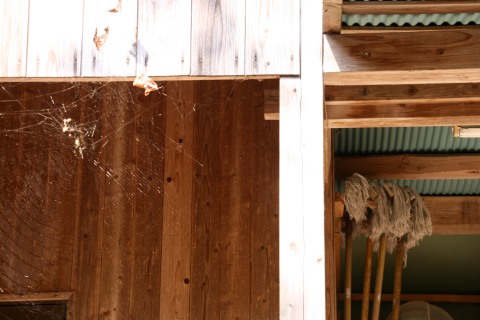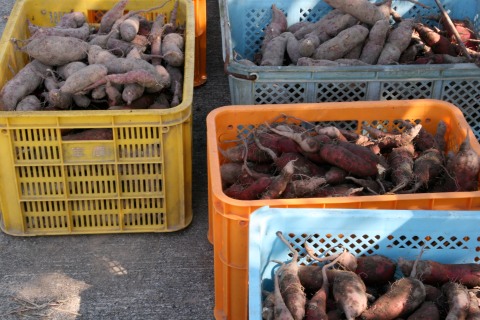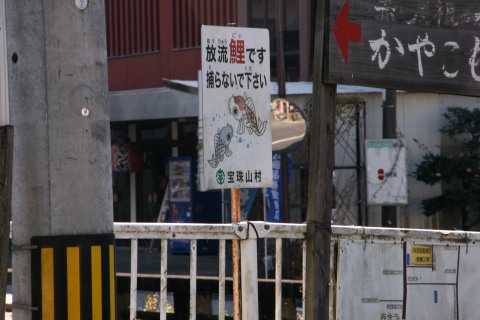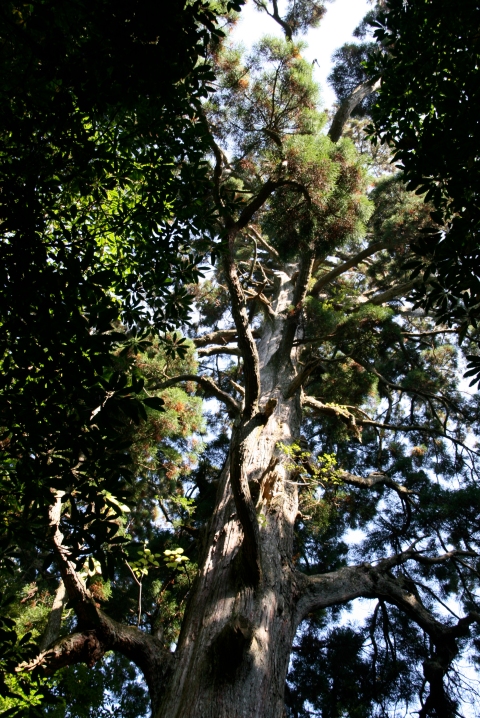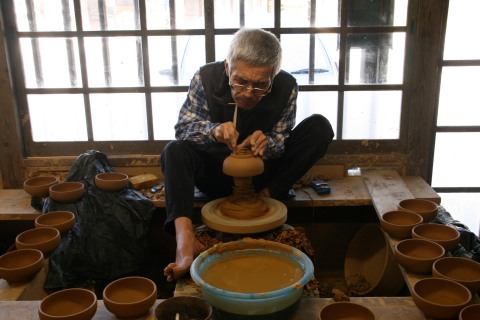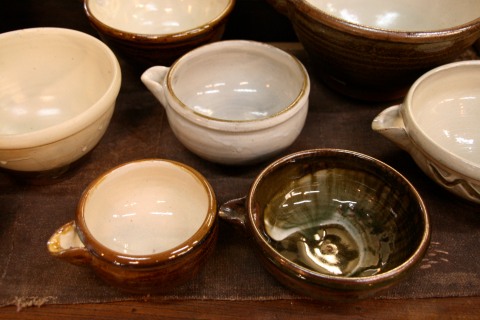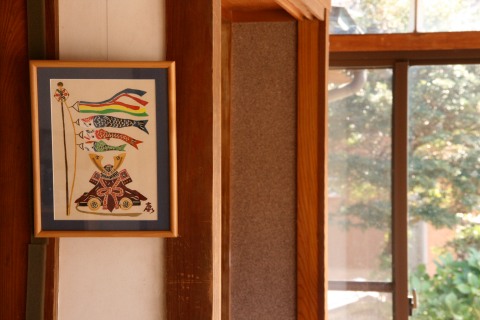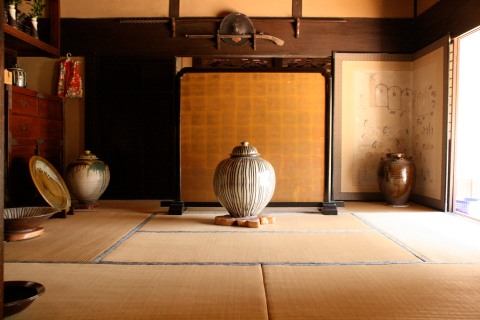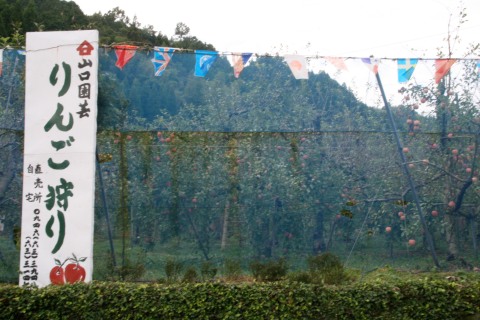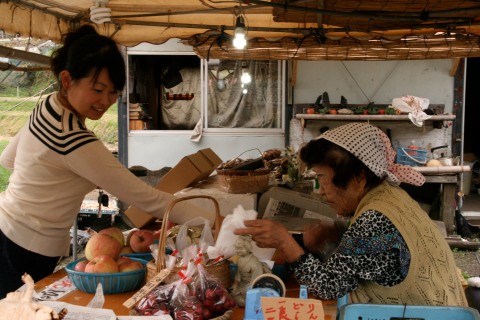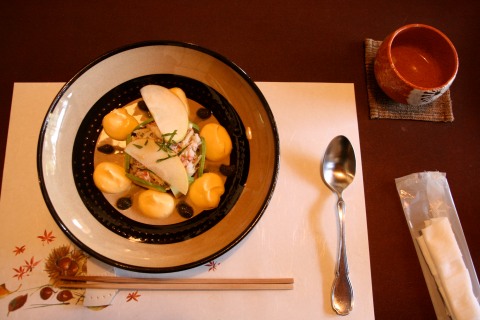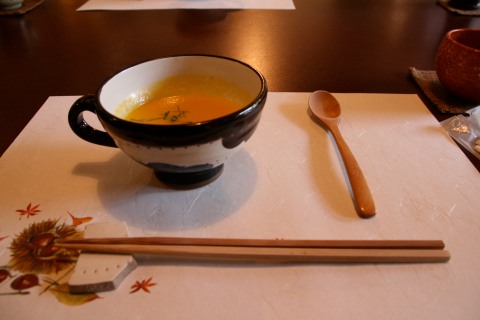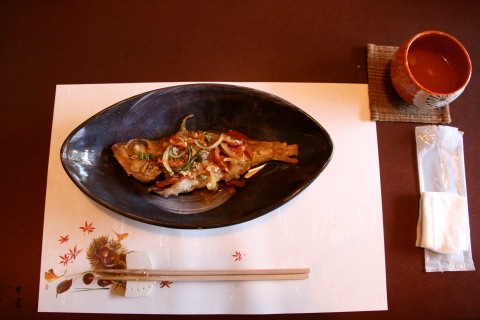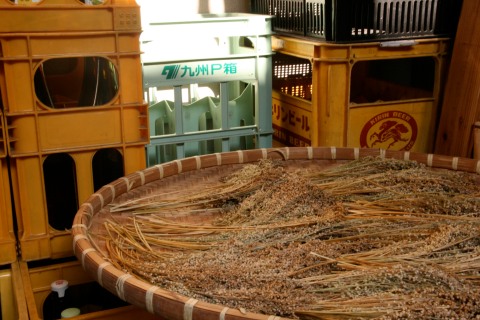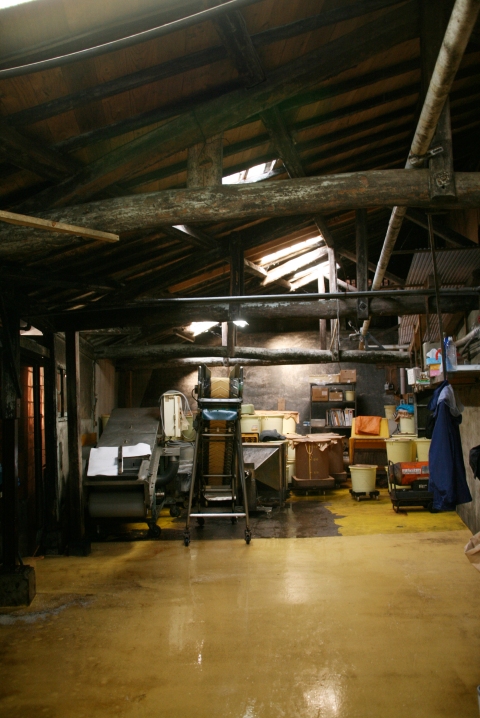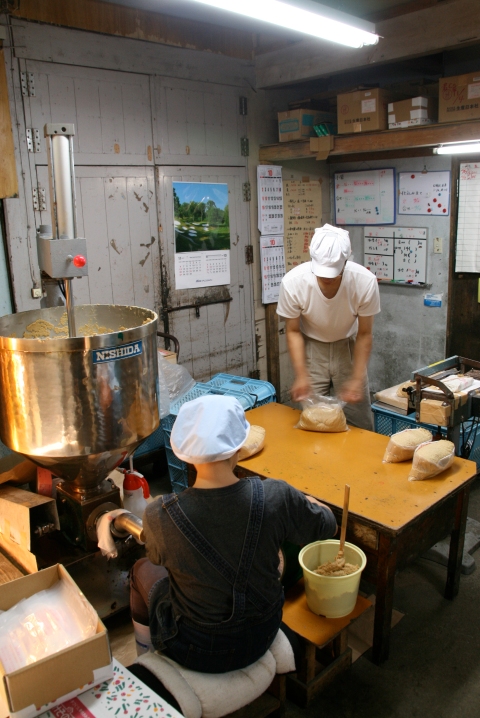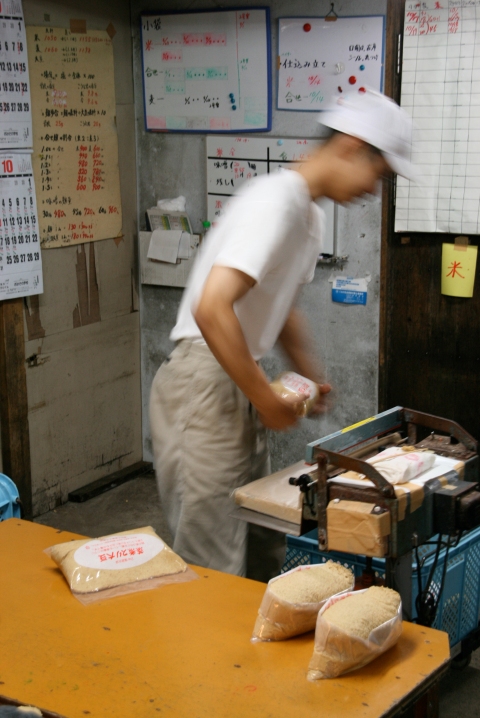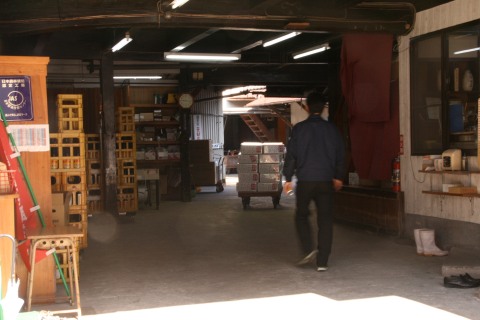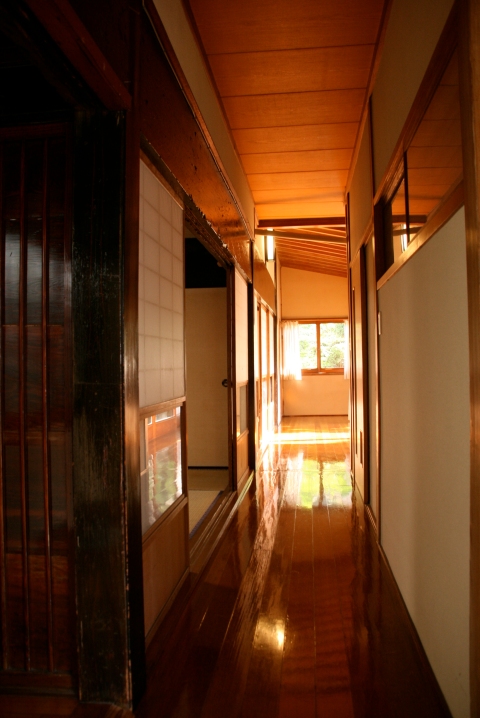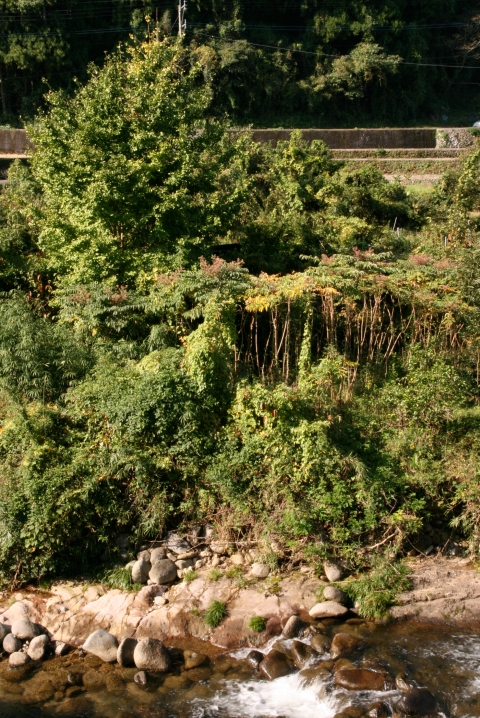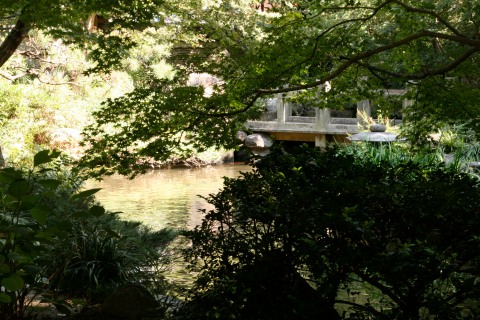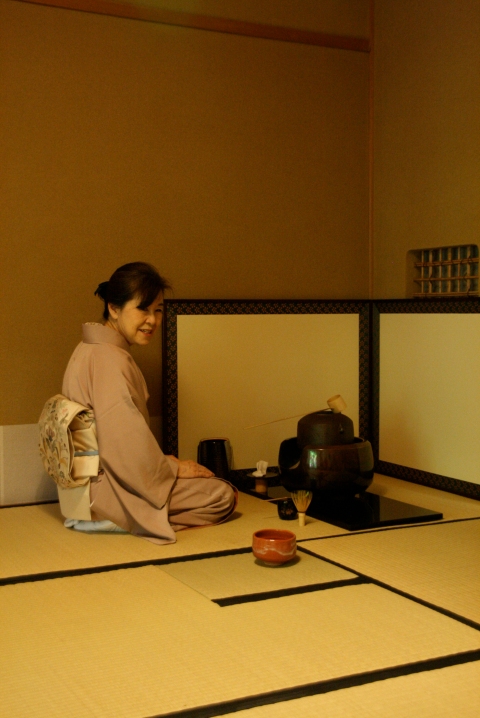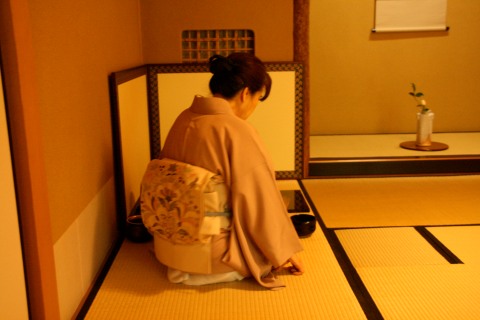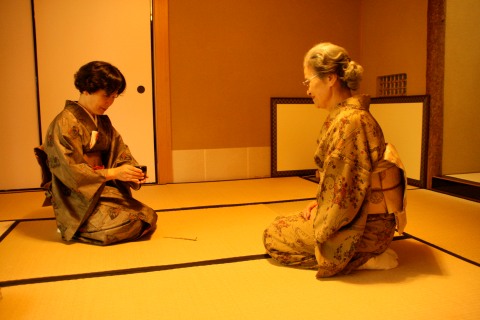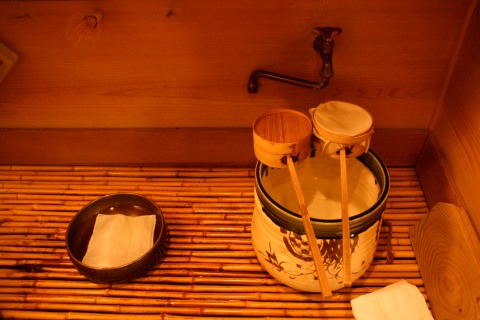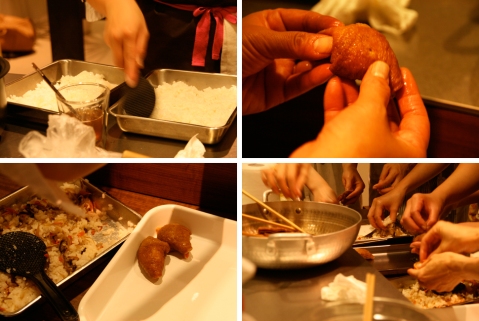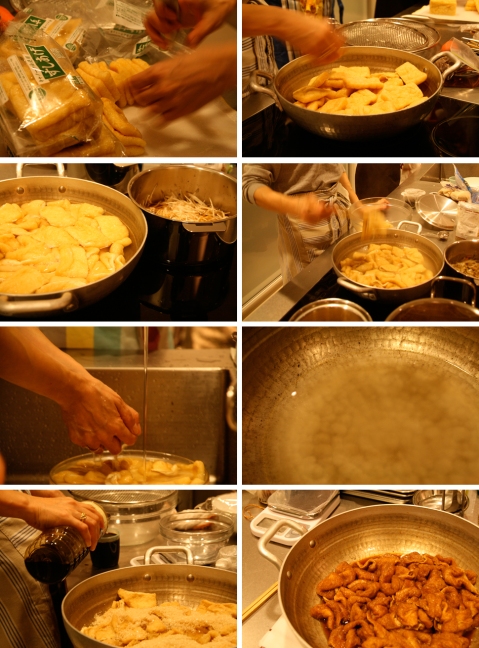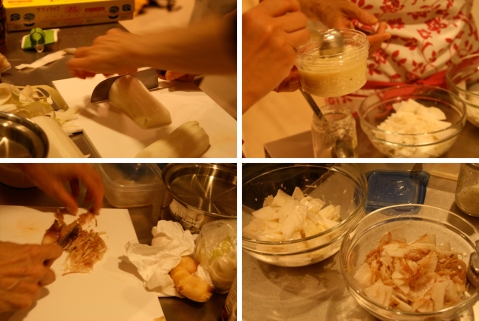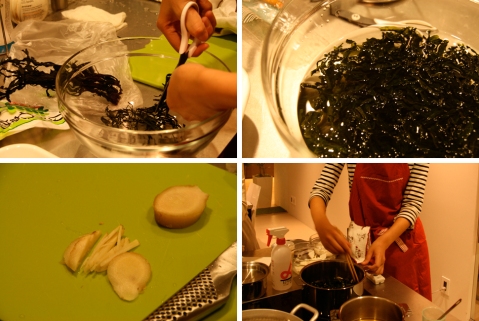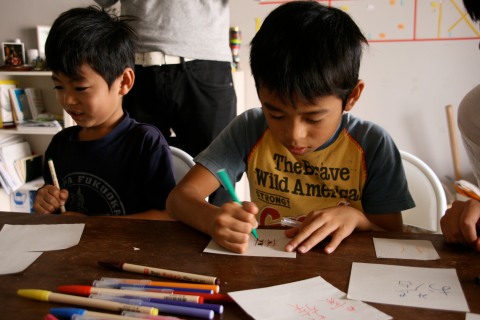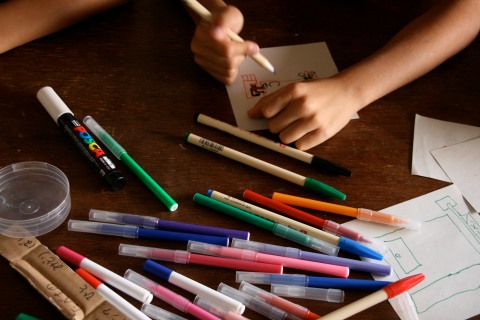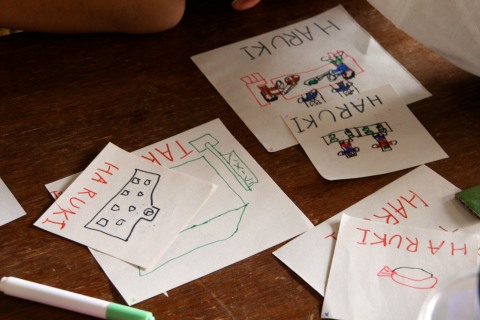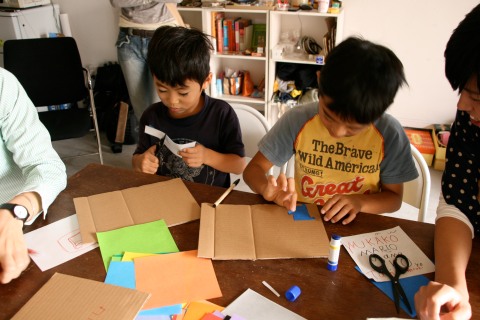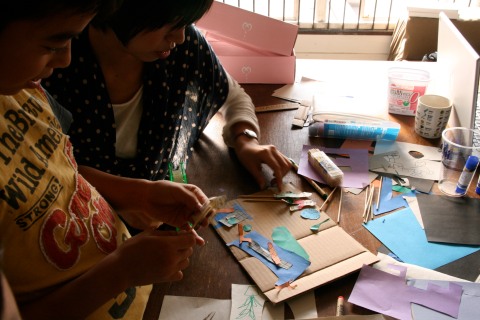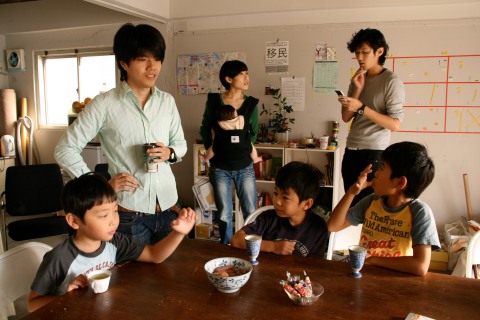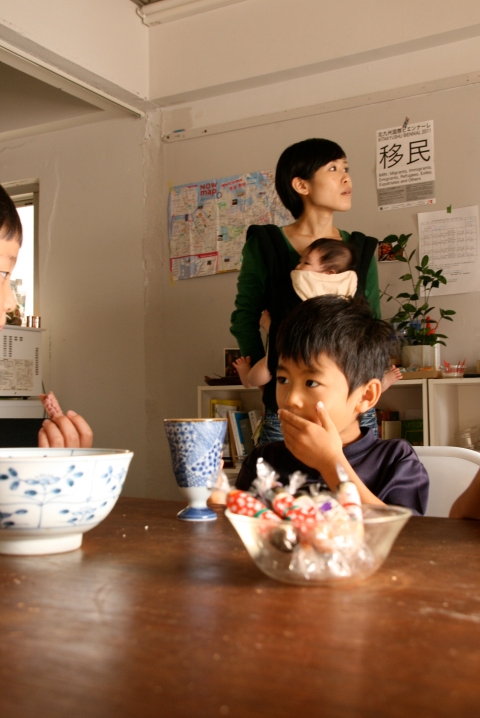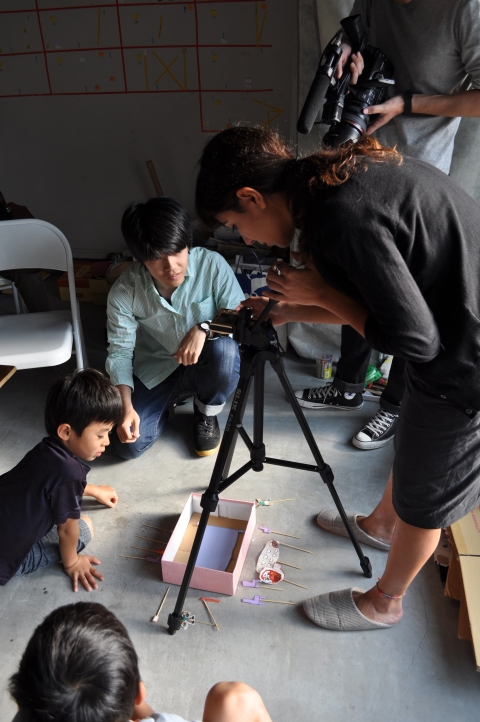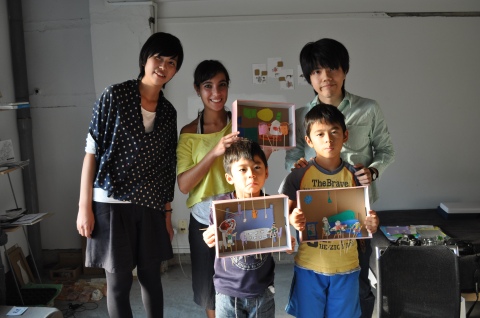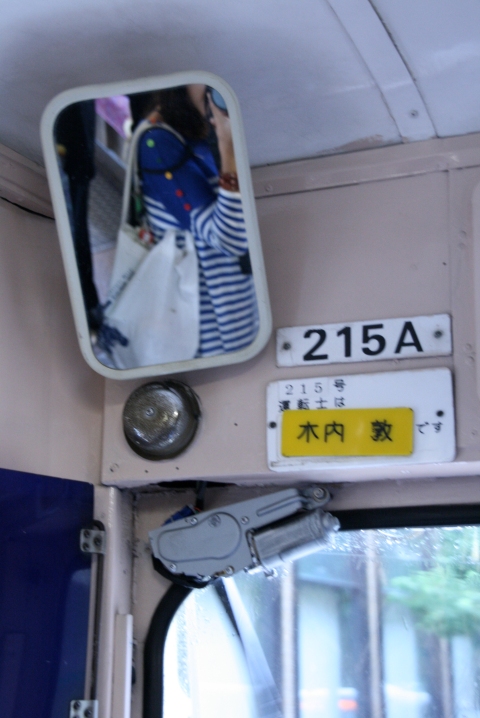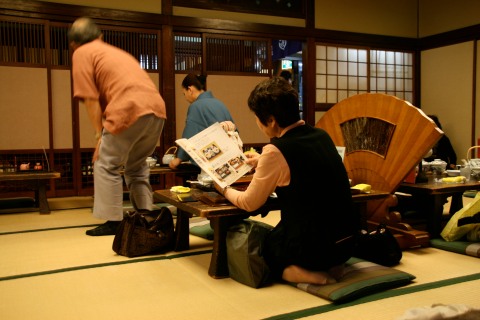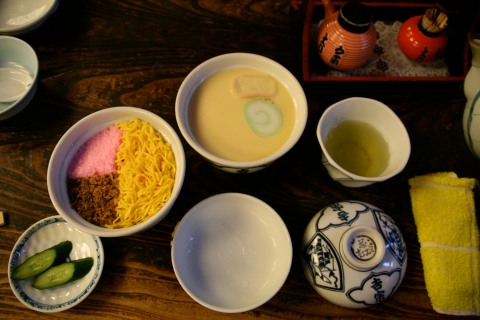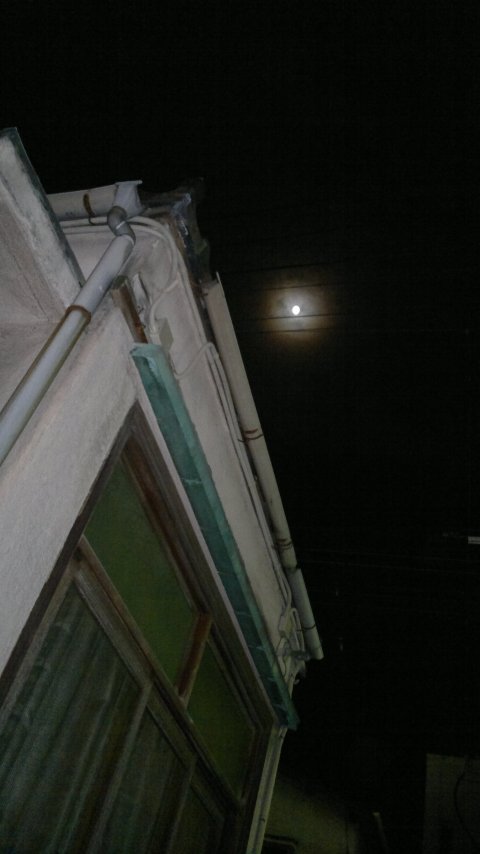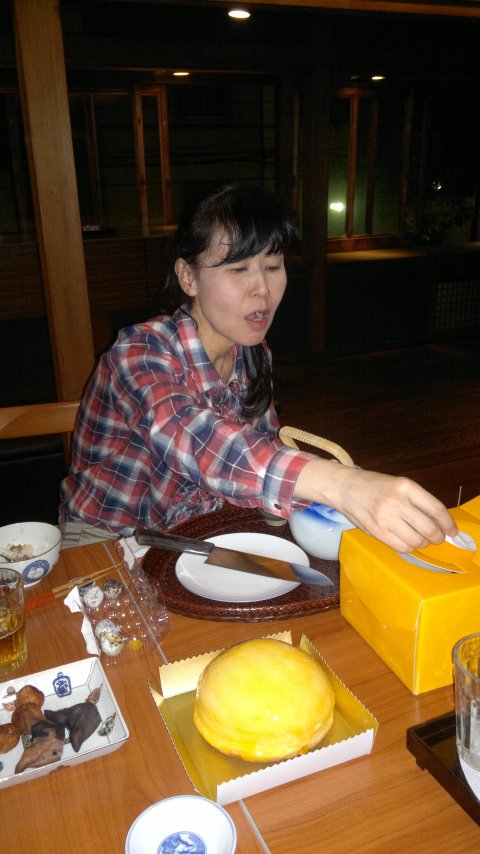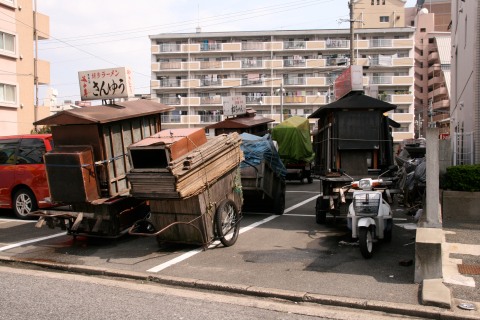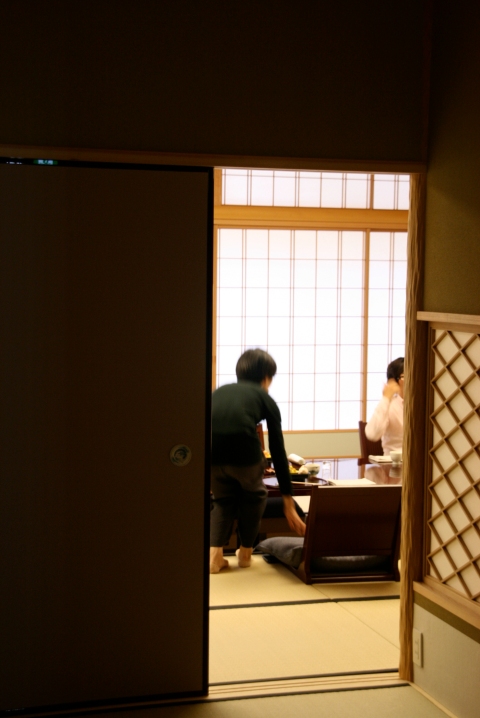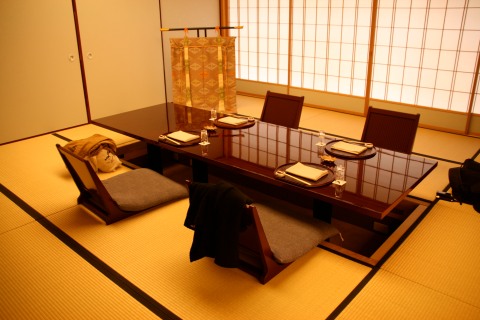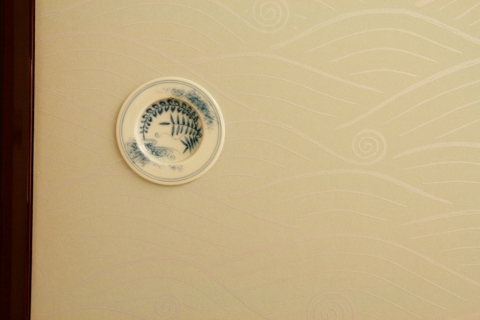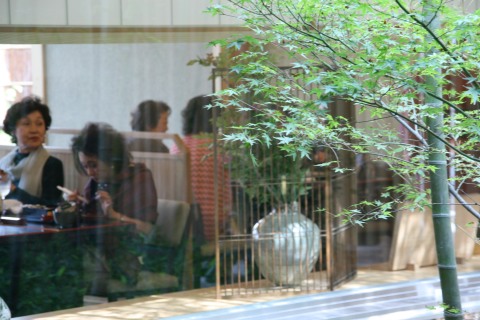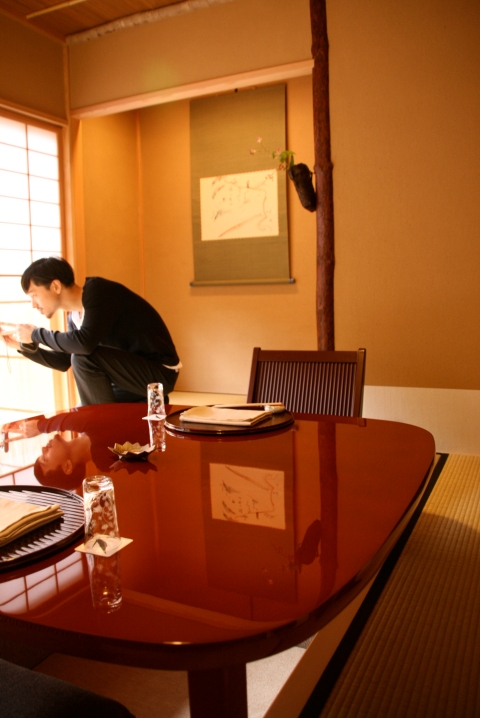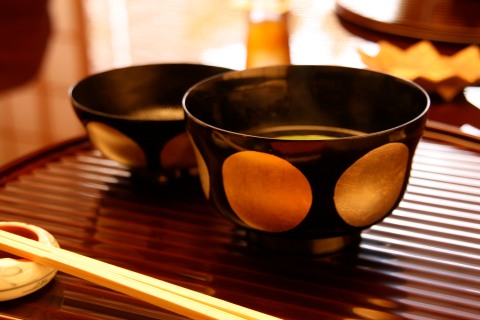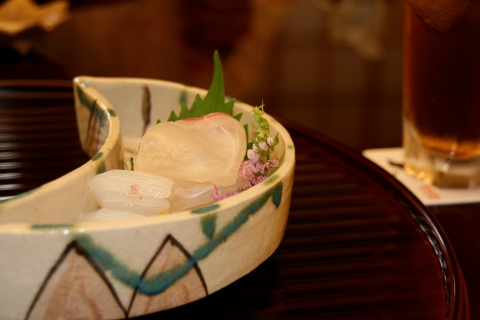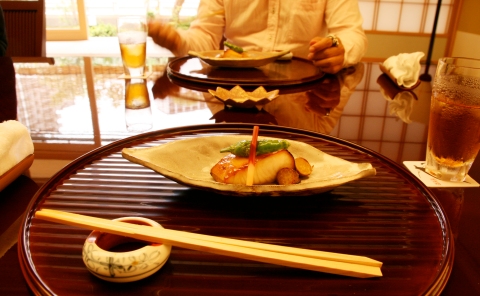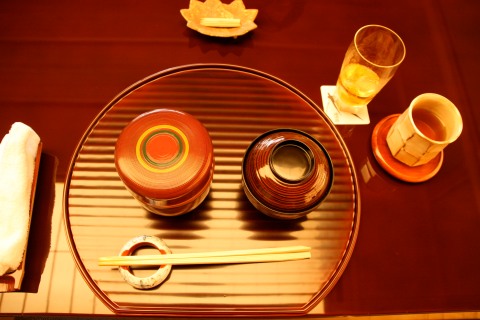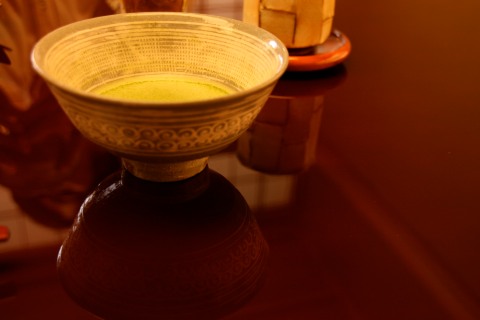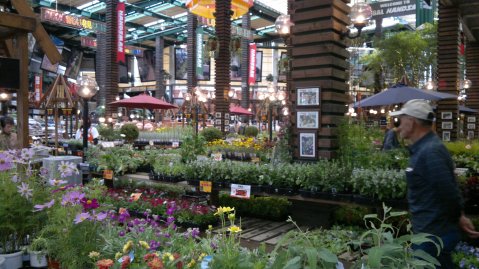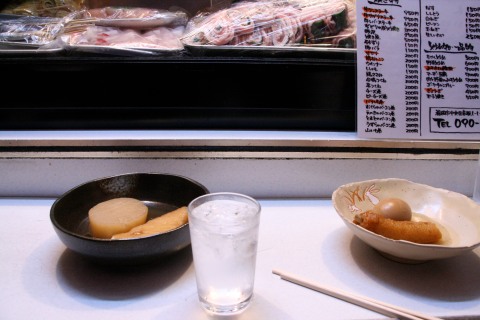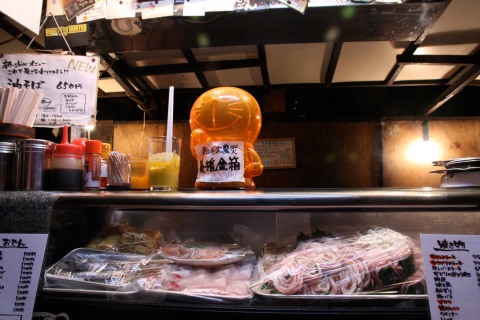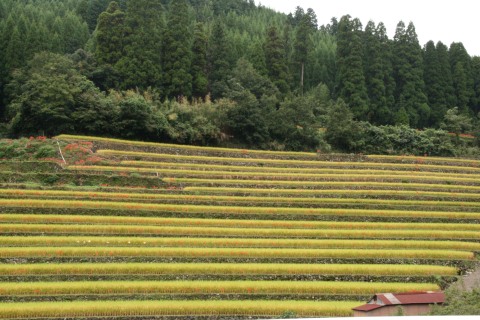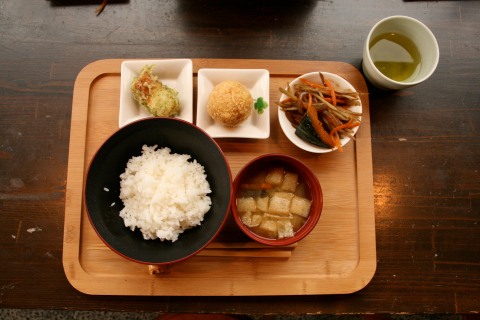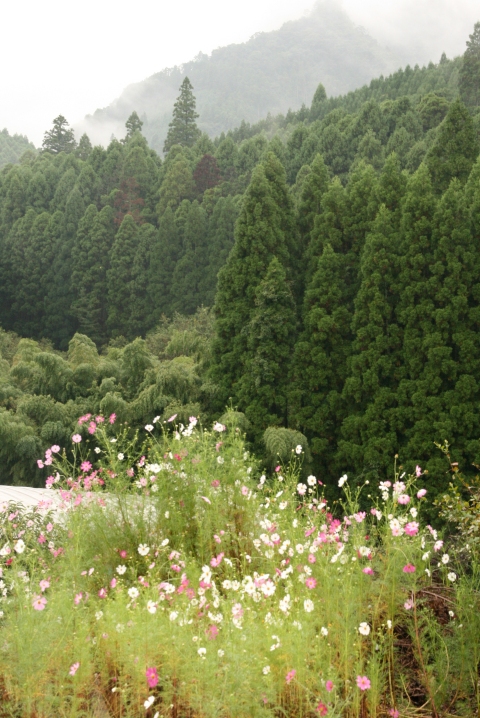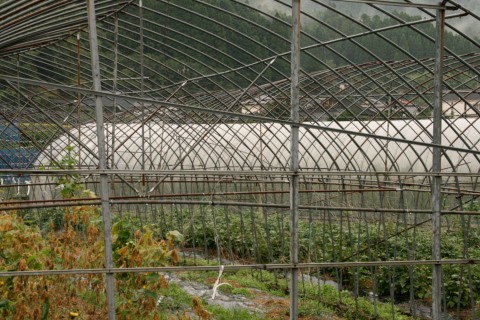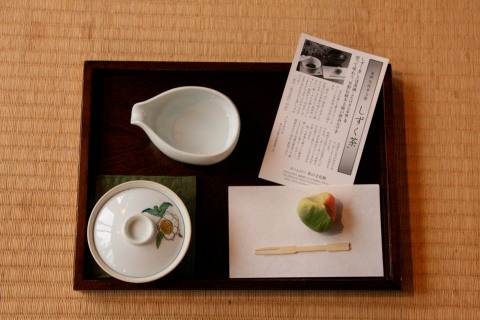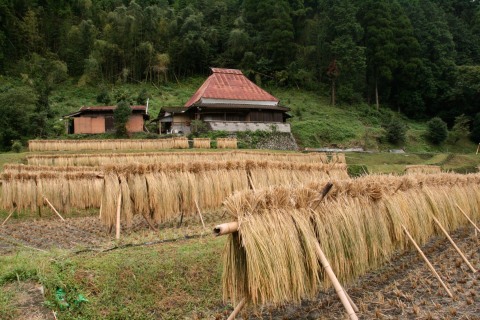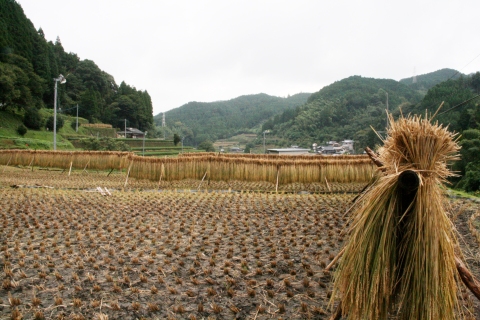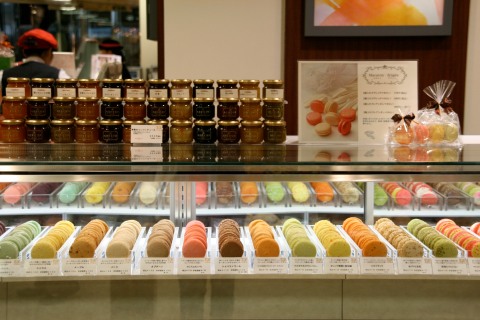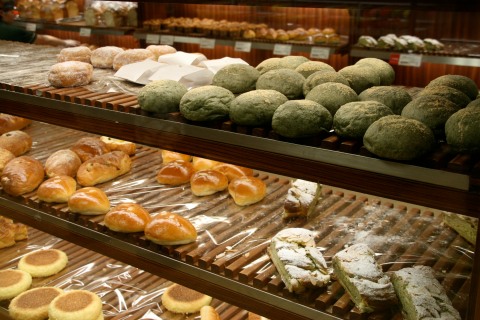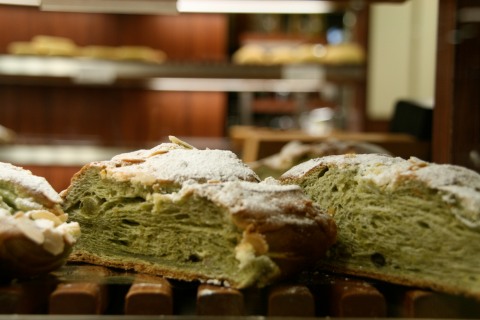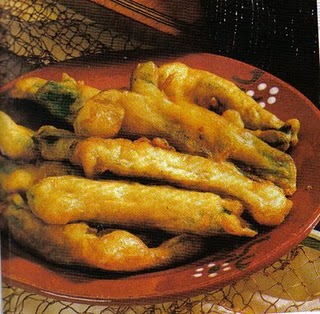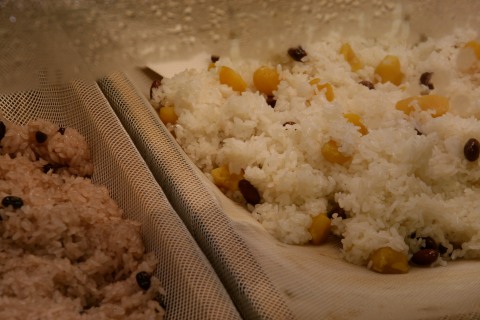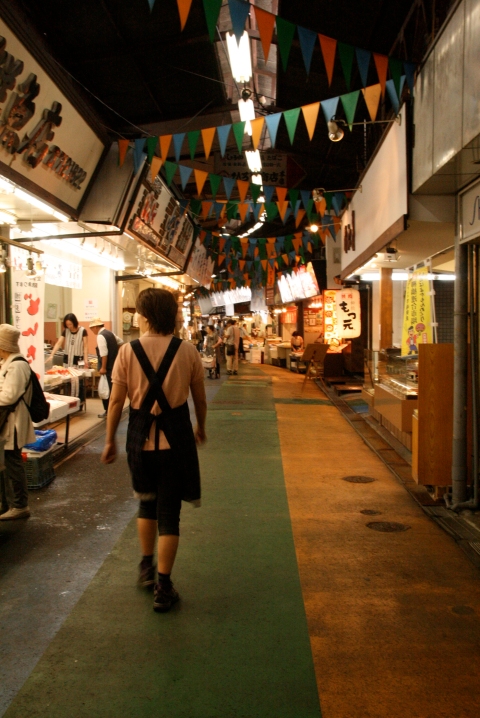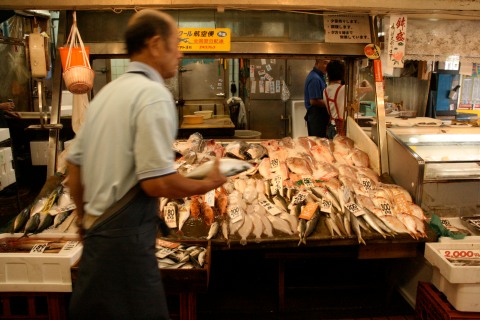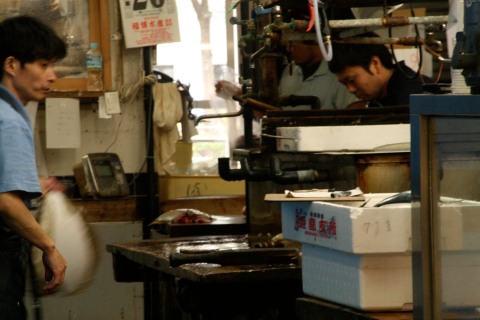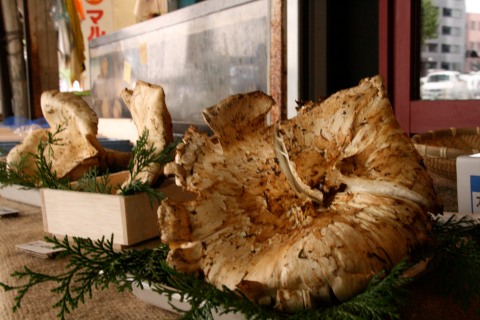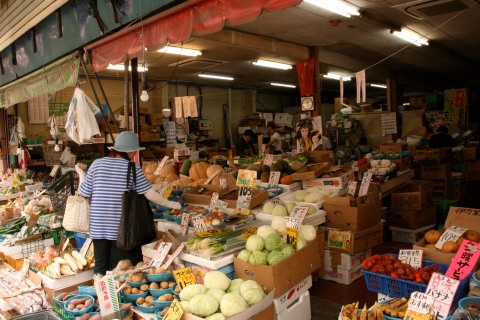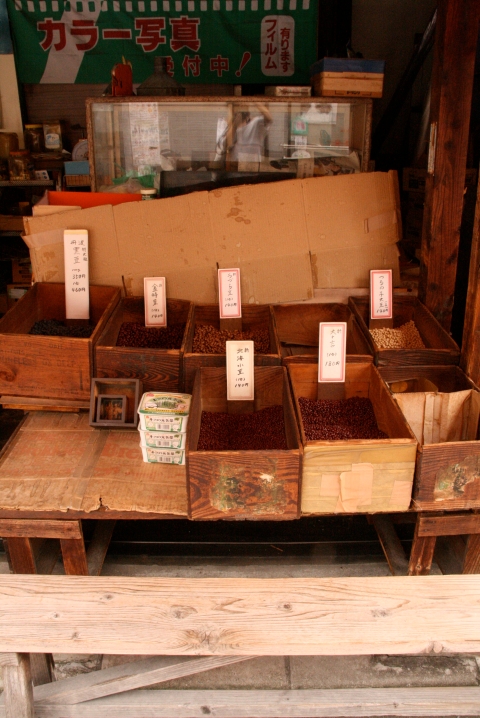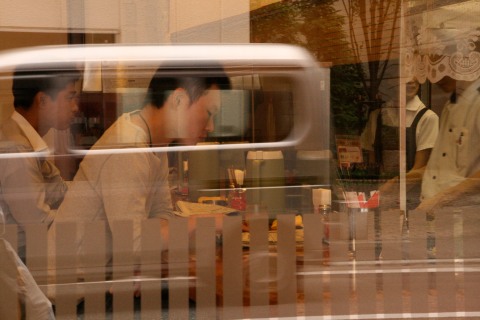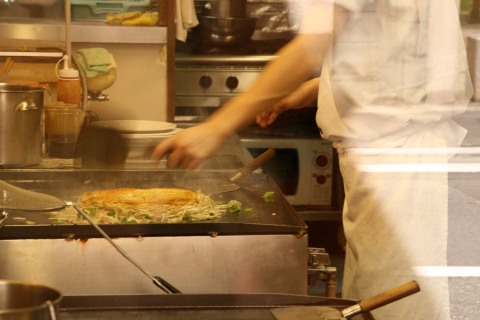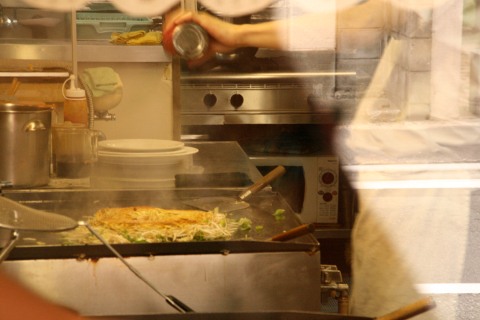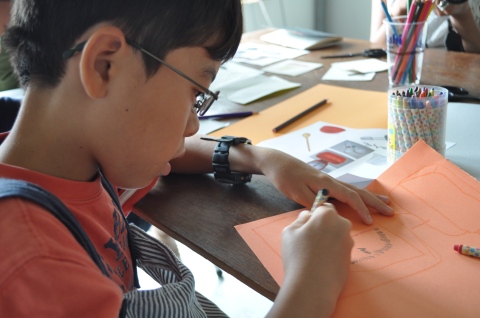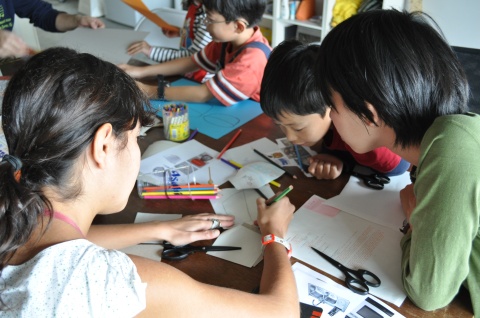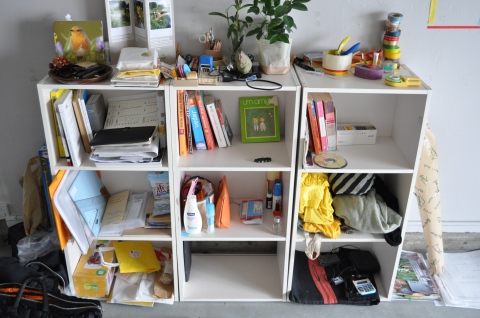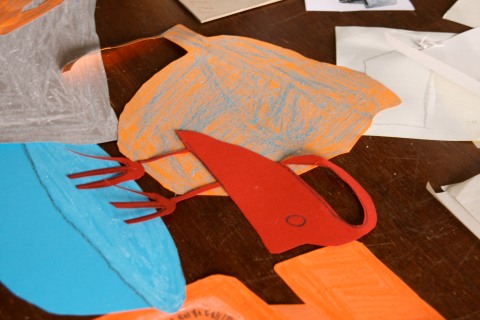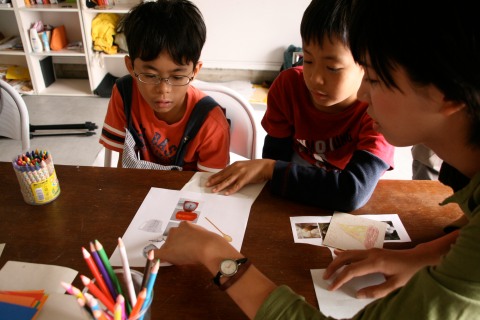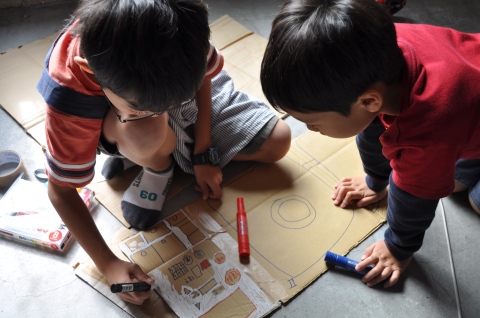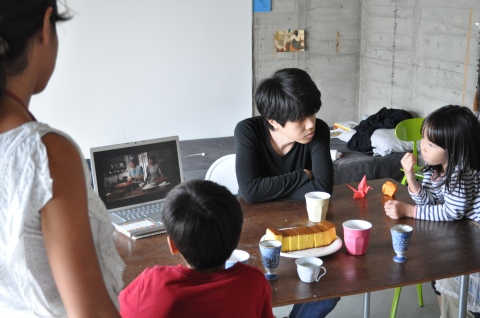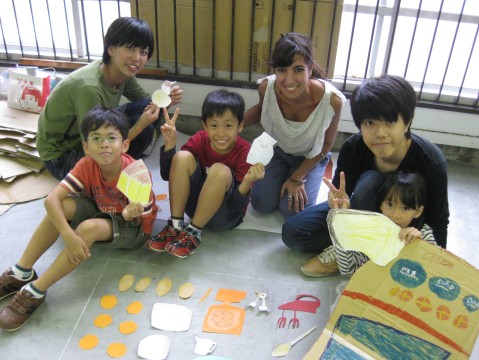| fieldwork || observations || week 7 ||
07|09|2011 § Leave a comment
|| observations || week 7 ||
:: Dinner at the table : :
221011 | 福岡
I was delighted to receive a photograph of the Table we designed and built with the children at the first workshop | Table Storm |. Yōsuke & Haruki took their table home and used it to eat dinner on that same night. The workshop proved to be a success and those two brothers came back for another day of ‘food and tables’ related activities at | Exhibitable |. We will proudly show their contribution to the project at the exhibition.
i* テーブルでの夕食 (dinner at the table)
|| Back to Bivi ||
221011 | 福岡
Yukako and I went to our Ryouri no jugyou #03 料理の授業 #03 at Bivi where Keiko taught us how to cook inari zushi. This time there was plenty of action involved and in small groups we cooked a very diverse and tasty meal.
i* How to prepare 稲荷寿司 (inari zushi, pouch of fried tofu filled with sushi rice)
:: Hōshuyama mura : :
201011 | 宝珠山村
Having woken up at 5am with incredible sacrifice I was certainly gave in as we approached Hōshuyama mura. The landscape was incredibly beautiful as I had not yet seen here in Japan. The mountains remained present in the background, but we drove through fields over fields of planted ground where no boundaries between farms could be perceived, as if it was a continuous propriety only broken by the occasional water channel.
The whole village and mountain was full of small surprises not just amongst the landscape and nature, but the buildings themselves and the welcoming character of the local population who always greeted us with a cup of tea and some tiny sweets.
It was a wonderful day and an alluring discovery of inner Japan and its people.
i* Hōshuyama, from an old school
i* In season, サツマイモ (sweet potatoes) :: sweet potatoes (satsumaimo) are simply steamed what makes their texture incredibly soft and delicious ::
i* 宝珠山
i* 背の高い杉の木 (Se no takai sugi no ki), in Hōshuyama one can find cedar (sugi 杉 ) trees called ascetic cedars, as tall as 59 m with a 2.5 m diametre trunk and as old as 800 years.
i* 宝珠山村に近い
i* リンゴ農園 (ringo nōen), apple plantation :: we bought some delicious sundried apples from this lovely lady’s orchard ::
I was taken for lunch at a beautiful traditional Japanese house close to Hōshuyama where Keiko’s fiancé sister & husband have a restaurant. Not only the location and the building were incredibly beautiful surrounded by mountains and lushly cultivated fields, but the food they served us was equally beautiful and delicious. Having lived in France, and worked as a chef in a Parisien Hotel, the food we ate was a blend of European and Japanese food served with the care and attention to detail one can always find in Japanese restaurants.
The number of dishes was vast. From starter to desert we ate no less then 10 different small delicious dishes. Each with incredible colours and exquisite flavours of those two complementary cuisines.
i* 1, 2, 3, 4, 5, 6, 7, 8, 9 … (part 2)
:: Miso factory : :
201011 | 宝珠山村
Most people assume that miso is always made with soy beans fermented with salt and kojikin (fungus), but there are many varieties of miso made with other grains such as rice and barley.
I went to visit a family run Miso factory in Hoshu mura that has been producing miso for over 6 generations where Miso is only one of the soy, rice and barley produces one can be delighted to encounter.
The smells were intense and the steam of the fermenting rice and beans was overpowering.
Miso soup is what normally comes to ones mind when thinking of miso, but this incredibly versatile and nutritious product is present in many other dishes as I found on one of my favourite Japanese food websites Savory Japan.
It was an enriching visit though the intricacies of the process could not be properly absorbed in so little time. Further reading and tasting is required to truly understand the full potential of miso as an ingredient.
i* 味噌の工場 (miso no kōjō), at the miso factory
i* over 100 years
:: 茶道 tea ceremony (sadō) : :
191011 | 福岡
For a long time I have been curious about what a Tea Ceremony consisted of. My parents had a Japanese friend, Kioko, who taught us that tea should never be poured in a cup all at once. It should be poured little by little, distributed in layers around the different guests so an even intensity of flavour could be reached.
That was a precious information I always kept in mind since I started appreciating tea. Having lived and travelled in Asia before made me aware of the peculiar flavours of certain Asian teas that I learned to love. So the more teas I had tasted, the more intrigued I was about what a Tea Ceremony really was about.
I imagine it must be hard to master the subtleties of the variations on flavour and colour between the different varieties of green tea and as much as I might appreciate all the many particular types I have tasted so far I couldn’t possibly tell the difference between some of them. So far, my favourite discoveries have been 玄米茶 genmaicha, roasted brown rice tea and ‘xxx’ that have very exquisite flavours. The first is strong and reminds one of the Autumn, the latter is delicate and slightly fruity, but not at all like the western fruit teas.
Tea is so embedded in Japanese cuisine that nowadays there are all sorts of things that taste like green tea (green tea ice-cream, candies, castella and so on…). And it is precisely about this special green tea, 抹茶 matcha, that this chapter is about. Sadō, the Tea Ceremony, is like a choreography on how to prepare and drink green tea where the viewers are also the dancers/actors… each step, each movement is so meticulously made that one feels that Sadō is as much about the choreograph, the gestures, the looks as it is about 抹茶 itself.
We (Yukako and I) arrived at a charming traditional Japanese house with a marvellous garden where a pre-wedding photographs session was taking place. A couple dressed with traditional wedding costumes was posing amongst the landscape on that warm autumn day.
We took off our shoes and put on the white socks that both had to buy specially for that occasion. Two beautiful elderly ladies guided us through the building and gave us some folded washi paper, a stick (that turned out to be a fork for the delicate cake we would eat with our tea) and a fan. We followed them and were taken to a room where the smell of the tatami and the sound of the boiling water immediately told us we were about to be part of this ceremony.
i* Japanese wedding :: photo shooting ::
i* 茶道
I would like to finish this post with Yukako’s kind email explaining the essence of Japanese Tea Ceremony that should be applied in everything and at all times in life.
|
show details 19 Oct (6 days ago)
|
a once-in-a-lifetime chance.
All people who we met at this project are also 一期一会!!See you on Friday
2011年10月19日15:29 urban nomads <atelier.urban.nomads@gmail.com>
|| observations || week 7 || Ryouri no jugyou #03 料理の授業 #03 ||
07|09|2011 § Leave a comment
|| Ryouri no jugyou #03 料理の授業 #03 ||
There were several different dishes to prepare to complete our 稲荷寿司 (inari zushi) lesson. Though all fairly simple, the number or dishes and variety made the process slightly lengthy, but it was certainly worth the preparation time as the results were incredibly delicious and beautiful to look at.
| 稲荷寿司 inari zushi |
Cook normal Japanese white rice (gohan 飯). Spread it on a tray and add the sushi vinegar with a rice cooker spoon. Don’t mix the vinegar with the rice too energetically or it will become rather sticky. Add the vegetables and prepare the little parcels using the fried tofu (age). Serve with a little bit of wasabi (to taste).
| age (thin fried tofu) |
One can buy age already prepared in the supermarket. However it cointains far too much oil that needs to the removed in order to prepare inari zushi. The process is simple. Using a wok or another wide pan, cut the age in half, separate them and let them cook in water at a low temperature. Repeat the process 2 or 3 times and, in between, drain the oily water in order to remove as much grease as possible. At he end, add soy sauce and sugar and let them cook for a while until they look soft and wrinkly. At this stage they should be ready to be filled in with the sushi rice.
| sushi vinegar |
Making a good vinegar mixture is essential to make good inari zushi or any kind or sushi. Mix the sugar, vinegar, mirin, sake and salt and bring it to boil until the smell starts being intense. Put to the side and let it cool down before you mix it with the rice.
| root vegetables and roasted soba beans soup |
These boiled root vegetables were both used as a soup and as the vegetable component of the rice mixture for the inari zushi filling.
Peel and thinly slice the burdock, carrots and daikon. Place the burdock in a bowl with water and use that same water for the soup.
Thinly slice dried shiitake mushrooms and leave them to swell in a bowl with water.
Place the roasted soba beans in a pan with water and let them cook. Add the vegetables and bring everything to boil with a little bit of sake.
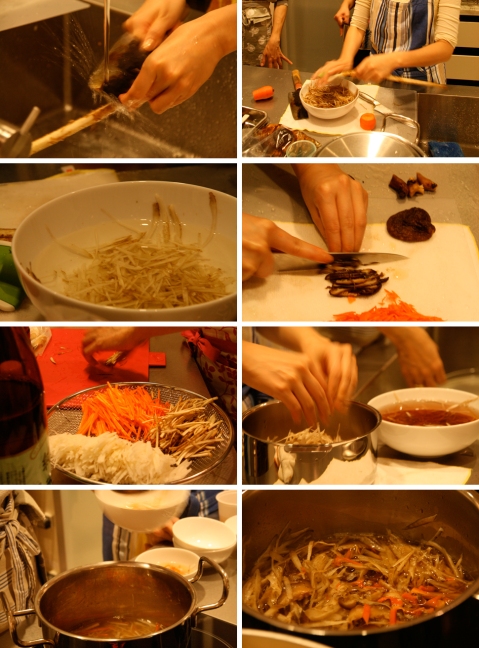
For the soup, boil some dried fish dashi and then add the vegetables.
| zazenmome |
This is a very easy to make side dish with soy beans and soy sauce.
Use already cooked soy beans. Bring them to boil with sugar. Lower the temperature and add the sake. Let it cook for a while (roughly 20/25 mins) until there is almost no sauce left.
| daikon with koji side dish |
Daikon is one of the most used vegetables in Japanese cuisine, an enormous raddish with high percentage of water and a gentle taste. This time it was prepared with koji rice (steamed rice that has had koji-kin, or koji mold spores, cultivated onto it).
Start by thinly slicing the daikon in quarters of a circle. Pour the koji and leave it to marinate. Add thinly sliced ginger or myōga (a variety of ginger native in Japan). Leave it to rest for a while and serve as a side dish.
| wakame side dish |
This side dish is very easy to make. One just has to cut the wakame seaweedin pieces roughly 2 cm long and let them swell so they become 13 times larger. Then add the thinly sliced ginger, soy sauce and sake. Take it to boil and once soft and tasty remove from the heat and add the sesame oil so it can be served as a side dish.
| shiratama dango |
For desert we prepared shiratama
| fermented juice |
At the beginning of the lesson we were served what was called a ‘fermented juice’ that consisted of apple, lemon, ginger and carrot all gone through a juice maker. I truly recommend.
| ginger and cinnamon cold tea |
This is an extra. At the end of the lesson we were served a glass of very tasty cold tea made of boiled sliced ginger with cinnamon, clover, black pepper and brown sugar. Once boiled it should be put in the fridge making a delicious and refreshing summer drink.
|| workshops || w1 | Designing our Table | ExhibiTable |
07|09|2011 § 1 Comment
w 1.3 | 16.10 |
| ExhibiTable | curating a day around the theme ‘food’
with the participation of … | eishun (Konya2023), yukako (Konya2023) |
and …| yōsuke . keiichiro . haruki |
|| Programme : description ||
intro > Introducing each other. Self-portrait drawings of each child and description of name, age.
This workshop will focus on people’s everyday eating habits. We have measured the table on the 1st workshop, then we filled it with delicious food and we are now ready to enjoy it, to experience it. So, in this workshop we will make pop up scenarios around ‘food’ of a typical weekday and a typical weekend.
1> Each child will be given 9 pieces of paper of 3 different sizes. They will have to draw their favourite, so so and least favourite:
: food
: place where you eat (ex. kitchen, living room, school, park)
: people you eat with (ex. parents, friends, grandparents)
We will the create a diagram of hierarchies with all the children’s drawings. These topics represent the 3 layers of our pop up settings: scenario (place), actors (people), goods (food).
—- we will watch some short stop frame animations to give inspiration for the following tasks —-
2> The group will then be split into 2:
: weekdays and weekends :
2.1> Each group will have to make 3 stages that should fit inside shoe boxes. The scenarios are:
– a day around breakfast time
– a day at lunch time
– a day at dinner time
Each child will have to cut out and draw with felt pens and crayons the scenarios (place + furniture), people and food that illustrate those moments in the day having in mind they will be animated at the end.
3> At this stage we should be almost ready to start animating. The characters and objects will be attached to sticks so that the animation can start.
3.1> We will rehearse the storylines so we can then photograph the sequences that form a complete day.
Ideally the children should elements in the drawings that help representing the different times of the day (such as clocks, the sun/moon, etc)… the more detail, the more interesting the animations will become. The focus is ‘food’, so that should be emphasized when explaining the tasks.
3.2> We will create two stop motion animations: weekdays and weekends.
3.3> The result of the stop frame animation should become an integral part of the project [Table for 100’s].
i* drawings of food, people and places…
i** preparing the scenarios
i*** tea break
The team was small in number of children, but productive in the amount of work done. Some of the boys had attended the first workshop and proudly told me they used the table they made in the gallery at home to have supper.
It wasn’t easy to make the children distinguish the difference in habits between weekdays and weekends, but some of the drawings they made and the scenarios for the different meals were good examples of their favourite places to have dinner, favourite food and the people they enjoy having meals with. I learned that onigiri is a usual breakfast treat and that the children mostly like eating out with their parents, both in Japanese and western style restaurants.
As an example of breakfast one of the children represented his living room where he seats on a rug and has breakfast on a low table. For lunch, they went to a ramen restaurant with the family, and for dinner to a yakitori place where they seat around a normal height table with their family.
At the end we managed to put together a small animation that represented the different meals, not necessarily as they have them normally, but their favourite environments to have a meal. These will be represented in different exhibition pieces of [Table for 100’s].
i***** action
i****** ごちそうさまでした
| fieldwork || observations || week 6 ||
07|09|2011 § Leave a comment
|| observations || week 6 ||
:: 長崎 Nagasaki ::
141011 | 長崎
A day out in Nagasaki…
Where the Portuguese got established in the XVI century…
The city of castella … the link between Portugal and Japan…
… a new city born from the ashes of the atomic bomb
A rainy day, a grim day…
A hilly city by the sea…
The smell of the tram tracks,
the sound of the rain…
The colours of Japan
The memories of what no longer exists
Tohoku Kyushu project…
A different view of this country through Shomei Tomatsu’s lenses…
A journey back home along the sea.
i* in Nagasaki
:: Chawan-Mushi ::
141011 | 長崎
On our day out in Nagasaki we went for lunch in one of the oldest restaurants in town, a place that survived the atomic bomb… a building that is almost 100 years old, Yossou. Yossou is a beautiful timber restaurant that looks almost unreal, as if it had come out of a Yasujirou Ozu’s film.
The entrance shelves full of shoes reveal how popular Yossou is by the number of shoes packed in the different dividers. We sat on a step covered with a red carpet, took off our shoes and went up some incredibly narrow stairs that took us to the first floor (2F in Japan) where we found two very large rooms covered with tatami mats and some beautiful dark timber low tables.
We looked at the menu and made our choice chawan mushi, the house’s speciality. Nagasaki is famous for being a port city where different cultures met. Chinese, Korean, Portuguese, Dutch… all have pass through and left their mark in Nagasaki making it an eclectic city at all different levels. Food is certainly not an exception and different flavours and ingredients from distinct origins lead to certain types of food, like ‘chawan mushi’ that somehow look and taste unreal. A bowl full of white rice layered with shredded smoked mackerel and egg noodles next to the soup. The mixture between dashi and egg resulted on a strange custard looking creamy liquid where one could dig out some pieces of tofu, chicken and a green and white fish cake… and finally two diagonally cut slices of cucumber. Simple and somehow strange. Not the most delicious food I have tried in Japan, but certainly the most colourful and exquisite looking.
The restaurant was marvellous and the fact that we were all seating down on the mats made it somehow feel like all the people in the room were having lunch together.
The rain wouldn’t stop pouring, we had to go and hide in the oldest catholic church in Japan. Nagasaki is certainly the least Japanese city I have visited here in Japan.
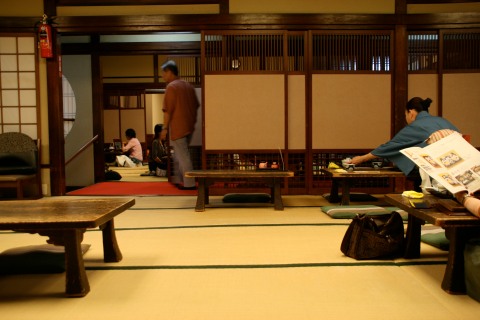
i* Yossou
:: And so we started… ::
121011 | 福岡
The first register of what will soon be a [Table for 100’s].
i* Reclaimed timber >> table layout
:: Tsukimi paatii ::
101011 | 福岡
The connection between people and nature can be fully acknowledged everywhere. Shops change decoration to celebrate the start of Autumn. Tableware also changes depending on the season and parties are held to simply admire the full moon tsuiki.
I was invited to a Tsukimi party (moon viewing party) at the beautiful Soba restaurant I had already been to to watch Rakugo. The setting was beautiful. A traditional timber building with very steep stairs and tatami mats in the main room. The garden is small, but each flower pot is carefully positioned. Sayaka, the party host, had prepared a table full of Autumn and moon related small delicacies, a real treat for the eyes and the month. I tried Asian some incredibly soft roots I had never seen before, some delicious fish balls and at the end, a full moon cake that had been specially brought for me, the guest foreigner.
All the guests were delighted looking at the moon… ii desu ne! ii desu ne! kirei ne. …
Any excuse is a good excuse for a good party. Admiring the full moon, seems to me like an excellent one. (something to import back home)
i* Moon viewing, 月見 (tsukimi)
:: 乳製品 Dairy products ::
101011 | 福岡
The words of Luís Fróis vs. today’s reality.
39. Nós estimamos coisas de leite, queijo e manteiga e tutanos; os japões abominam tudo isto e cheira-lhe[s] muito mal.
39. 私たちポルトガル人にとっては、牛乳、チーズ、バターなどの乳製品が重要だが、日本人にとってはそれほど重要でなく、ひどい匂いだと思っている。
39. We value dairy products, milk, cheese, butter and other relics; the Japanese despise all of these, for them, these have an awful smell.
i* スーパーマーケットで
| fieldwork || observations || week 5 ||
07|09|2011 § Leave a comment
|| observations || week 5 ||
:: 鍋 Nabe ::
071011 | 星野村
I was invited for dinner at Yukiko and Tsuneo’s place. A real treat, as people, in Japan, sometimes have to avoid having guests around due to the confinement of space in their compact houses. They said it was going to be a simple meal, but very typical. Nabe, it was. A delicious hot pot to warm us up in this transition of seasons. Apparently, nabe (hot pot) pots are often given as wedding presents to the brooms, so there was a collection of all different sizes and shapes nabe pots carefully stored away in a cupboard apart from the one we actually used. Clay ones (土鍋, donabe) are the most traditional and originate from Jomon times. It was a simple, but certainly tasty (oishii) meal. The water was previously boiled with kombu and only then transferred to the actual hot pot pan where it kept being heated up whilst the different ingredients were added. No other sauces were added to the soup, but a vast variety of vegetables, fish and shirataki (konnyaku made in noodle form). We ate from little bowls that had been filled with soy sauce and grated daikon. At the end, cooked rice was added to the soup where it was left for some minutes to soak up the flavour of all the cooked ingredients.
At the end, we were all rather full, but certainly very satisfied. There are many hotpot recipes one can try. When I got home I looked some up online and came across two good websites (1, 2) where one can find some of those recipes to try at home.
i* おいしい鍋
:: 屋台のゲットー Yatai ghetto ::
071011 | 星野村
One always wonders were the 屋台 that don’t stay in their active spot go to during the day…. Places that boost with delicious smells and the buzzing noise of people chitchatting become totally empty during the day.
As I was walking to the restaurant where I was about to spend three hours having a meal, I came across a parking lot completely full of 屋台! The mystery was solved. There must be plenty of parking lots around the city where 屋台 get together during the day for a quiet rest to save up energy for the long evenings of non-stop activity.
i* 屋台のゲットー
:: 1,2,3,4,5,6,7,8,9 … … … ::
071011 | 星野村
I was told lunch would start at 11.30am and would take a while, probably around three hours, from start to finish. I wondered how four people could take so long to have lunch, but not only it was possible, but it certainly didn’t feel at all like three hours had passed.
We went for lunch at one of the most prestigious restaurants in Fukuoka where normally only unoccupied ladies go during the day, and businessman go in the evening. A fairly new building that followed the traditional style in every detail imaginable. To match the attention to detail in its architecture was the attention to detail in the service, where gentleness, kindness and discretion did not lack at any time. We were taken to our own dining room where the table was low, the floor raised, and the smell of the tatami gave a feeling of comfort and homeliness to that minimal space. We had a view to the river and our own garden to admire whilst enjoying the numerous dishes that were served during those three hours. One after the other, seasonal dishes were served in seasonal tableware that celebrated the autumn and the moon festivities. Small portions carefully arranged on the plates, and carefully placed on the almost circular lacquered trays, displayed a combination of the five essential colours all dishes should have: white, black, green, red and yellow. The tastes were sublime, and subtle. I was particularly delighted with a very light soup where a foamy yellow circle (like a full moon) ornamented with some strings of negi (chives) floated inside a lacquered small bowl. The foamy yellow circle was a like a fish soufflé that melted in the mouth and as it was getting dismantled, each piece started dancing in the liquid of the soup. Another delicious treat (they were all delicious, but some certainly stood out) was the grilled mackerel サバ (saba) served on a plate in the shape of a leaf. It was just the perfect amount of food with no other side dish but a roasted small root and a green pepper. Absolutely delicious.
The variety of teas was also remarkable. From a cold flavoursome green tea, to a hot one and at the end, some foamy match accompanied by a very small bean paste 餡 (an) sweat
Whilst we had lunch the owner of the restaurant came seat next to our table and talk to us for a little while about the food and the place. After a while, her mother come around and did exactly the same. Mother and daughter looked incredibly similar, the features, the posture and the voice. The restaurant had passed from one generation to the next and will keep doing so in the future.
It was a remarkable eating experience that I recommend one should have at least once in a life time so that food and space can be contemplated with the time and attention they deserve.
i* 空き容量
i* 食べ物とお茶
:: DIYパラダイス : DIY Paradise ::
051011 | 星野村
The rain was harshly falling outside, but we had arranged to go by car on a timber hunting trip. Eishun had contacted different places were we could get free timber off-cuts to start building the table, so we drove around Fukuoka to get some timber from various places. One of the first stops was a DIY store just outside Fukuoka, Handsman. As strange as it might sound, it was the most beautiful DIY shop I had been to. Though slightly tacky, as they tend to be anyway, the first space, with all the flowers was so open and colourful, I immediately started imagining how marvellous the area around the Table can be with so little.
Several shelves with leaflets with instructions on how to build in a DIY style were colourfully arranged in such way that any person who is reluctant to build things by himself would at least be curious to have a look at how to do so.
We got some timber and I also got several packs of Japanese vegetable seeds that I will take home and try to plant. Lets see if Portuguese climate will suit some exciting root vegetables.
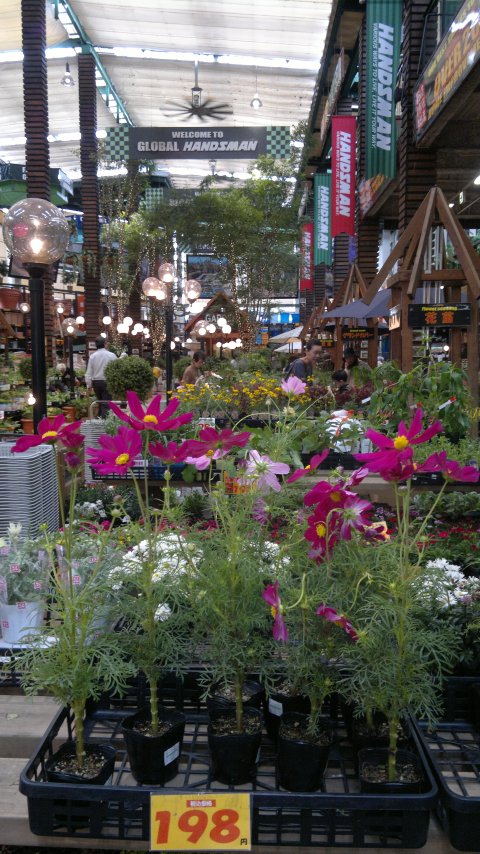
i* Because DIY shops can also be beautiful
:: University canteen ::
051011 | 星野村
During our trip we stopped at Kyūshū University, the Design Campus. A beautiful building designed by one of Louis Kahn’s disciples.
We had lunch at the school canteen where ladies with ‘shower caps’ vigorously turned the udon noodles around enormous saucepans. Even there the food was good, though the canteen room was rather old fashioned and not terribly welcoming.

i* Vigorouly stiring
:: Downstairs neighbours ::
041011 | 星野村
The morning I arrived at Konya for the first time, I was perplexed to encounter several flower pots full of basil on a little courtyard on the ground floor. I was certain Japanese didn’t use basil in their cooking, so I was astonished on how international a place I was about to move in to. Well, the ground floor of Konya’s building is an Italian restaurant, Kasa, owned by a Japanese couple who have never been to Italy. Quite an interesting concept… to establish a restaurant of a type of cuisine whose country of origin one has never been to.
We had some starters and a main dish. It was all rather tasty and it was the first time I had some olive oil since I got here, so the familiarity of the smells and herbs generated an incredible feeling of nostalgia. The wine was certainly what I enjoyed the most, a full-bodied dry white wine from Sicily. That I certainly miss from back home, a good glass of wine. One of the starters was fugu’s tempura ふぐ天ぷら (blowfish tempura). Certainly not very Italian, but incredibly delicious. The restaurant owners are a lovely couple. Every evening we greet each other with a nod as I pass by the always crowded little sophisticated Italian restaurant in my building. I never imagined I was going to be this close to Europe.
i* Stuffed courgettes drizzled witg olive oil
:: Post dinner snack at a Yatai ::
041011 | 星野村
I finally got to have a full Yatai experience, with shōchū, oden and ramen. As we had just finished dinner, it was more like a treat then a real meal, but was enough to get a feeling of how it is to seat around a thin table, eating next to people we don’t know in a friendly environment on an outdoors/indoors environment. Though Yatai are placed on the streets, the noren pieces help creating a cosy environment around a table. The food was tasty and filling, a good culmination of the light dinner we had at Kasa.
i* Oden | shōchū | oden
| fieldwork || observations || week 4 ||
07|09|2011 § Leave a comment
|| observations || week 4 ||
:: Hoshino-mura ::
300911 | 星野村
Rice (gohan) being the core of all Japanese meals (also called gohan) deserves special attention during my research for [Table for 100’s], so once Keiko offered to take me somewhere in the country by car, I immediately thought we should go and visit the rice-fields in Kyuushuu. This time of the year is particularly beautiful as, not only the rice flowers are in blossom (hiranbana), filling the golden yellow fields with a tint of dark pink, but also, it’s the time of the year when the rice is harvested and hang on bamboo poles where it dries before the grains are collected.
Hoshino-mura is a rather special place, as the fields are organized in steps/shelves (tanada) and in-between the rice plantations one can also find impeccable turfs of green tea that we were then able to try at the Tea Museum.
Shizuku o-cha, is an exquisite variety of tea, especial from this region, and should be drunk in a tea cup with a little lid that helps the one who is drinking separating the leaves from the water. The tea can then be eaten with vinegar and salt and with a taste that resembles spinach.
i* Stepped rice and green tea fields, Hoshino-mura
i* Lunch at a small local restaurant
i* Wild flowers & Sunflower greenhouses’
i* Shizuku o-cha
i* Drying the rice & higanbana (rice flowers in blossom)
:: Soba @ Rakugo ::
290911 | 福岡
I was invited to join a traditional Japanese Storytelling Performance, Rakugo 落語 (meaning fallen words). Rakugo is told by a storyteller (rakugoka) who plays different roles in the play. Each story is composed of an introductory chapter and a main story. In this case, there were two storytellers, one from Osaka and one from Tokyo. One could tell the difference by their accents and their facial expressions.
Once the play was over, both the members of the audience and the Rakugoka set around a long table for a Soba dinner. The dinner was cheery and delicious. The venue where the performance was held is also a famous Soba house in Fukuoka, so soba noodles were made and served in a rather precious manner. The course had three steps. A small entrance served on a round lacquered tray. Minimal amounts of food were carefully displayed in a combination of colour and shapes impeccably arranged. It was ten followed by an equally minimal portion of vegetables and shrimps tempura that should be dipped in a little bowl of salt. And, to finish the meal, zaru soba (cold soba) served on an elevated tray on top of a wicker mat and accompanied with soy sauce and thinly sliced spring onions with wasabi and gratted daikon.
What surprised me the most were not the beautiful dishes, nor the fact that the storytellers were having dinner with the audience, but the rhythm in which the food was served. Each person was served at a different time and that appeared to be absolutely normal. Some people had already finished, whilst others were still at the start of the meal.
i* Vegetables & Shrimps Tempura
i* From starter to the main dish (zaru soba)
i* Zaru soba
:: Sorera ni iro o tsukeru それらに色をつける ::
280911 | 福岡
At Mitsukoshi Depaato I encountered the most beautiful food department at the basement. Biscuits, cakes, bread, fruits & vegetables, jams and main dishes from all different colours and shapes, so carefully and orderly displayed, were screaming at the visitors to try them out and experience a full sensorial journey.
i* Colour them in
i* Matcha bread and cakes
:: Shokuhin no heiretsu 食品の並列 ::
280911 | 福岡
As part of the research, I went around Fukoka searching for the six parallel dishes, those that can be found in both Portuguese and Japanese Cuisine and result from a cultural exchange in the 16th century. I went to the incredible food halls in various department stores and supermarkets where I have found, tried and photographed the different dishes and can now compare them with the parallel Portuguese version. One can certainly see the similarities, but the taste and presentation makes each dish individual and now typical from the places they are cooked in. They have gained their own identity, even if the origin is shared between them.
i* カステラ Castella & Pão de Ló (image from the web)
i* 鶏卵素麺 Keiran Somen & Fios de Ovos (image from the web)
i* 南蛮漬け Nanbanzuke & Escabeche (image from the web)
i* 天ぷら Tempura & Peixinhos da Horta (image from the web)
i* 飯 Gohan & Arroz (photo by Raquel & Mário Alpalhão)
:: Yanagibashi shijō 柳橋市場 ::
260911 | 福岡
Almost everyday I cycle along an old colourful structure that looks like it had been tacked away by the pavement, rather then built there purposefully. The structure I’m referring to is one of the oldest food markets in Fukuoka where one can encounter whale fillets, an immense variety of fishes in all forms and conservation methods, stalls filled up with never seen varieties of mushrooms and seaweeds, along with beautiful (and expensive) vegetables and fruits.
Going to food markets always feels like a treat and makes me want to immediately start inventing new recipes with all the ingredients my eyes can see. Yanagibashi market was just as fascinating to the eyes as it was to my palate once I had the chance to try some of the fresh produce that was on display.
i* Yanagibashi market
i* Yanagibashi market
i* Preparing the fish
i* Dried fish
i* Mushrooms
:: Minoshima Market Street ::
260911 | 福岡
Minoshima Market Street is a very narrow street that runs across a few blocks and along it brings together all sorts of small, and large, groceries, fruit and vegetable shops, and specialized food stores and stalls, where one can find fresh food with slightly more accessible prices. Its narrowness is what is most charming as one gets a sense of walking along a domestic corridor populated with impressive colours and flavours.
i* Yaoya 八百屋
i* Mame no mise 豆の店
i* Ryōri rāmen 料理ラーメン (Cooking ramen)
|| workshops || w1 | Designing our Table | Eating @ the Table |
07|09|2011 § Leave a comment
w 1.2 | 02.10 |
| Eating @ the Table | cooking session of parallel dishes : Portuguese and Japanese food for [Table for 100’s]
with the participation of … | eishun (Konya2023), yukako (Konya2023) |
and …| tetsu . taisei . moe |
|| Programme : description ||
intro > Introducing each other. Self-portray drawings of each child and description of name, age and favourite food.
1> This workshop will focus on food itself, food from Portugal and food from Japan. The children will replicate a tv-cooking programme and will also create a still motion animation with cut-outs of the two chosen parallel recipes ‘peixinhos da horta & tempura’ and ‘pão-de-ló & castella’.
1.1> We will start by watching short films on how to cook our 2 chosen dishes in two different ways (Portuguese style and Japanese style).
1.2> Small groups of 3 or 4 children will be formed, each will be in-charge of a recipe. The groups will be given an illustrated list of ingredients and cooking utensils needed to reproduce the cooking session.
1.3> Using different coloured papers the children will create cut-out ingredients and utensils that will be used in the cooking session.
2> Once all ingredients and utensils are cut out we will start by:
2.1> Recreating the two versions of ‘tempura’ (Japanese and Portuguese style) as if the children were the hosts of a cooking tv programme. They will be able to understand how the something so similar is cooked in a slightly different ways in two countries in opposite sides of the world to eachother.
2.2> We will then create two stop motion animations on how to prepare ‘castella’ (Japanese and Portuguese style) showing how such food with very similar ingredients can look so different as a food product.
3> The result of the films and stop frame animation should become an integral part of the project [Table for 100’s].
* children should bring their own apron to the workshop.
How to make Castella
How to make Matcha Castella
How to make Pão de Ló
How to make Tempura
How to make Peixinhos da Horta
i* preparing the ingredients and utensils before the cooking session
As the team of cooks and makers was smaller then expected, we decided to focus on one recipe and one representation method only.
The duo Castella/Pão de Ló were the recipes chosen, as we would not only be able to draw each component of the recipes, but we would also be able to try the real thing… real Castella for tea!
The size of the group and the nature of the tasks allowed the workshop to go very smoothly and the children were very excited about drawing each ingredient and utensil with incredible detail to better document the sequencing of steps needed to cook the real recipes.
We started by watching short films on how to cook Castella and Pão de Ló and carefully made notes on the similarities and differences between the two. We then used different colour card, paper, pens and pencils and drew/cut each component of the two recipes.
i** the real Castella
After a short tea break where we tasted a slice of Fukuoka style Castella, we started making the films of the two versions of the recipes.
The children appeared to be surprised and thrilled by how something that apparently looked so similar could be so different, specially during the baking process.
Castella
<< ingredients >>
: 2 Tbsp milk
: 2 Tbsp honey
: 4 eggs
: 3/4 cup sugar
: 3/4 cup bread flour, sifted
<< utensils >>
: 1 large bowl
: 1 big wooden spoon
: 1 electric whisk
: waxed paper
: rectangular baking tin
: jug to heat up the milk
: scales
: skewer
: large rectangular plate
<< kitchen equipment >>
: a stove
: an oven
: a sink
<< cooking procedures >>
Line a large loaf pan or two small loaf pans with waxed paper.
Mix the honey in warm milk and set aside.
Preheat the oven in 250ºC.
Whisk eggs in a large bowl using an electric hand-mixer, adding sugar gradually. Place the bowl over warm water in another large bowl and whisk eggs until the mixture becomes light yellow (almost white). Mix the milk and honey mixture in. Add sifted flour in the bowl and mix gently with a spatula.
Pour the batter in lined loaf pan and tap the pan gently on the table to release any air bubbles. Bake at 250ºC for about 10 minutes and turn down oven to 140ºC and bake for about 40 minutes, or until done. To check if the cake is done, poke it with a bamboo skewer. If the skewer comes out clean it’s done. Flip the pan upside down on a cooking sheet or platter and remove the pan from the kasutera. Remove the waxed paper and cool the kasutera. Wrap it with plastic wrap until the next day. It tastes better the next day. Cut the kasutera into 3/4 inch thick slices.
Pão de Ló
<< ingredients >>
: 6 egg yolks
: 4 eggs
: 230 gr of sugar
: 100 gr of white flour
<< utensils >>
: 1 large bowl
: 1 big wooden spoon
: 1 electric whisk
: waxed paper
: circular baking tin with a hole in the middle
: jug to heat up the milk
: scales
: skewer
: large round plate
<< kitchen equipment >>
: a stove
: an oven
: a sink
<< cooking procedures >>
Pour the egg yolks and the other 4 eggs into a bowl. Whisk them with sugar for 30 minutes with an electric whisk.
Turn on the oven all the way up to 250ºC. After having been whisking the egg mixture for 30 minutes (until is white) add the sieved flour and mix gently. Pour the mixture into the tin that has been previously surfaced with butter and flour.
Bake the cake at a very high temperature for the first 6 minutes and then turn the temperature down to 140ºC and let it cook for another 2 minutes.
Take it out of the oven and let it cool down before you take it out of the tin. Its height will slowly go down, but that is normal as it will become creamy and wet in the middle.
i*** slow moves
i**** ごちそうさまでした

